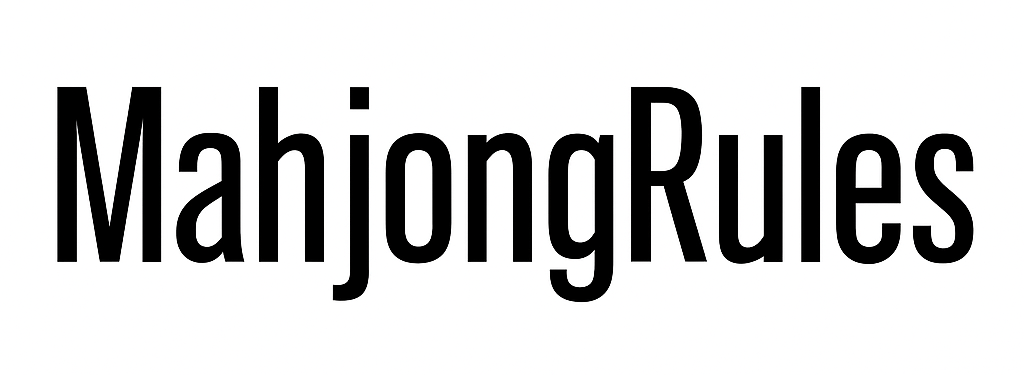Mahjong is one of those games that’s instantly recognizable – stacks of engraved tiles, intense concentration, and players slapping pieces down like it’s a street fight. But what exactly is mahjong? And more importantly: is it as complicated as it looks?
The short answer? It’s a strategy game with a rich history, tons of variations, and more depth than meets the eye.
The better answer? It’s one of the most rewarding games you’ll ever learn.
Hi, I’m Connor. I fell into the world of mahjong a few years ago when I was looking for a new hobby that didn’t involve staring at a screen all day. Turns out, I picked up a game that’s part puzzle, part poker, and part poetry.
Let’s break it down.
What Is Mahjong?
Mahjong is a tile-based game of strategy, skill, and memory played by four players. The goal is to form specific tile combinations (called hands) before your opponents do.
It originated in China in the 19th century and has since evolved into multiple regional styles, including:
- Chinese Classical
- Hong Kong Mahjong
- Japanese Riichi
- American Mahjong (with a scoring card)
Each version has its quirks, but the core remains: draw and discard tiles to form a winning hand.
Connor’s Take: “Mahjong isn’t just a game – it’s a language. At first, the tiles look like a blur. Then, slowly, you start seeing patterns. One day, it clicks.”
The Basic Structure of the Game
Objective
Form a complete hand – usually four sets (called melds) and one pair – before anyone else.
Tile Types
There are 144 tiles in most traditional sets, broken down into:
- Dots (Circles)
- Bamboo (Sticks)
- Characters (Numbers)
- Honor Tiles: Winds (East, South, West, North) and Dragons (Red, Green, White)
- Bonus Tiles (used in some versions): Flowers and Seasons
Game Flow
- Players draw and discard tiles in clockwise turns.
- Players may call discards to complete a set.
- The game ends when someone declares a winning hand – or the wall runs out.
Connor’s Take: “My first game felt like chaos. I didn’t know when to speak, when to stay quiet, or if I was even winning. But every round made more sense than the last. It’s like learning to drive – awkward at first, smooth later.”
Mahjong vs. Mahjong Solitaire
Let’s clear something up: Mahjong and Mahjong Solitaire are not the same game.
Mahjong is a multiplayer, competitive game with complex strategy.
Mahjong Solitaire is a matching puzzle game where you click tiles in pairs. It’s a fun way to learn tile symbols, but it won’t teach you how to play the real thing.
Connor’s Take: “Solitaire is like training wheels. Good for learning the tiles – but don’t stop there.”
Why Mahjong Is Worth Learning
1. Mental Challenge
It sharpens your memory, pattern recognition, and risk-reward decision-making.
2. Social Connection
It’s traditionally played face-to-face. Whether online or in person, it builds camaraderie.
3. Cultural Experience
You’re not just playing a game – you’re engaging with a rich cultural tradition.
4. Variation Keeps It Fresh
Each regional version brings something new. You’ll never get bored.
Connor’s Take: “I’ve played dozens of online games where I didn’t win – but I learned something every time. It’s a brain workout, but one you actually look forward to.”
How to Start Playing
You don’t need a fancy tile set or a table of four friends to get started. Online platforms make it easy:
Recommended Platforms for Beginners
- Mahjong Soul (Japanese Riichi)
- PlayMahjong.io (Chinese Classical)
- Real Mah Jongg (American Style)
- Tenhou.net (Advanced Riichi)
Start with bots, explore tutorials, and ease into real matches.
Connor’s Take: “Start with PlayMahjong.io if you want to dip your toes. No sign-up, no stress. Then graduate to Mahjong Soul when you want a challenge.”
Common Beginner Mistakes
- Trying to learn all rules at once – Stick to one version.
- Ignoring defense – Discarding tiles recklessly gets you burned.
- Skipping tutorials – They actually help.
- Focusing only on winning hands – Practice hand-building and spotting melds.
Connor’s Take: “I used to chase crazy hands every round. Then I realized winning small and smart was more satisfying – and more effective.”
FAQ
What is the goal of mahjong?
To be the first player to complete a legal hand by forming four sets and one pair using drawn or discarded tiles.
Is mahjong hard to learn?
The basics are simple, but it takes time to master. With online tutorials and practice, most players pick it up quickly.
Can I play mahjong alone?
Yes. Online platforms offer games against bots, which are great for learning.
What’s the best version of mahjong for beginners?
Chinese Classical or Hong Kong style are usually recommended for simplicity. American Mahjong is also beginner-friendly with its card-based system.
How many tiles do you start with in mahjong?
Each player starts with 13 tiles. On your turn, you draw a tile to make 14 and then discard one.
What is a meld in mahjong?
A meld is a set of three or four matching tiles. Common types are “pung” (three of a kind), “chow” (a straight of three), and “kong” (four of a kind).
Is mahjong similar to rummy?
Yes, in structure. Both involve drawing and discarding to complete a hand. But mahjong is more complex due to tile types, scoring, and rulesets.
Final Thoughts
Mahjong is more than a game—it’s a ritual, a mental workout, and a doorway to another culture. Yes, it takes time to learn. But the learning itself is part of the fun.
Connor’s Last Word: “I came to mahjong looking for a game. I found a whole world. Don’t worry about knowing everything. Just sit down, draw your first tile, and let the rest come naturally.”
🀄 Welcome to the table.
Written by Connor, who once played 42 hands in a row just to finally win with a concealed kong. Worth it.
